Resources
Here you can search external resources from STOP Spillover's experts (tagged in blue) and resources developed by the STOP Spillover project (tagged in red).
We found 16 resources.
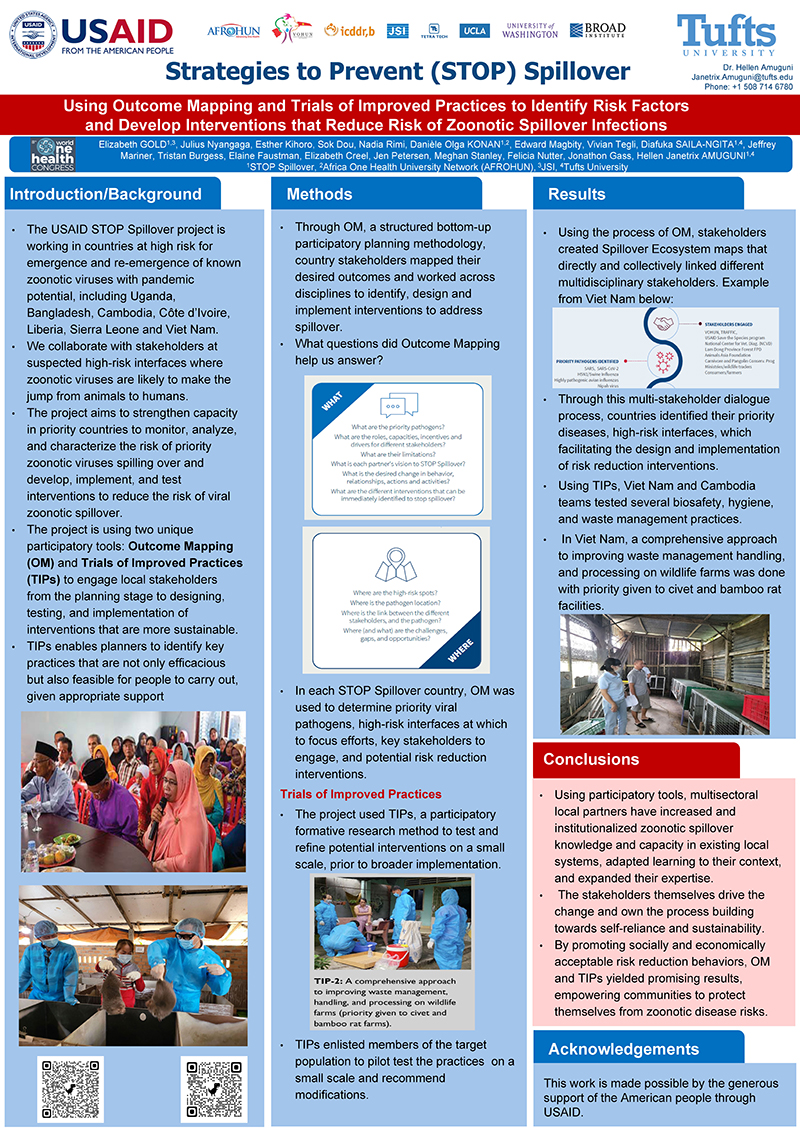
This STOP Spillover poster, presented at the 8th World One Health Congress 2024, describes the project's use of two unique participatory tools—Outcome Mapping and Trials of Improved Practices—to engage local stakeholders from the planning stage to designing, testing, and implementing interventions that are more sustainable.
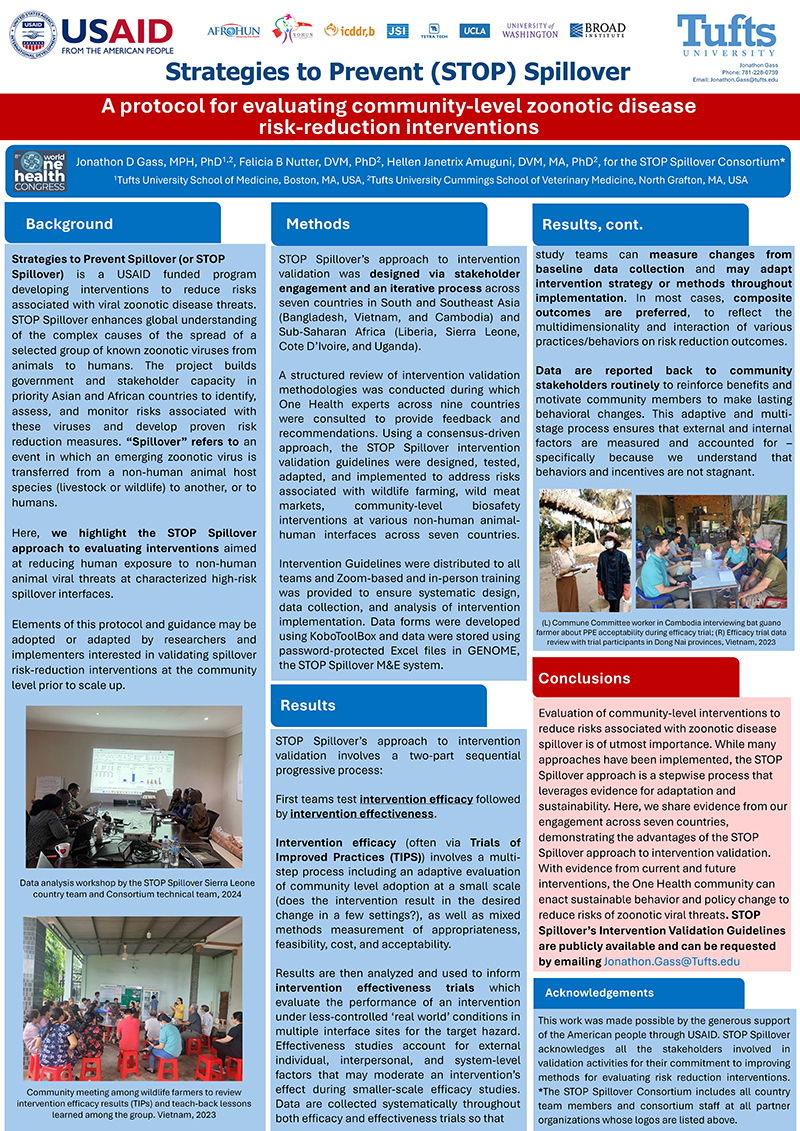
A Protocol for Evaluating Community-Level Zoonotic Disease Risk Reduction Interventions
This STOP Spillover poster, presented at the 8th World One Health Congress 2024, describes the project's approach to intervention validation, which was designed via stakeholder engagement and an iterative process across seven countries in South and Southeast Asia and Sub-Saharan Africa to address risks associated with wildlife farming, wild meat markets, and community-level biosafety interventions at various non-human animal-human interfaces.
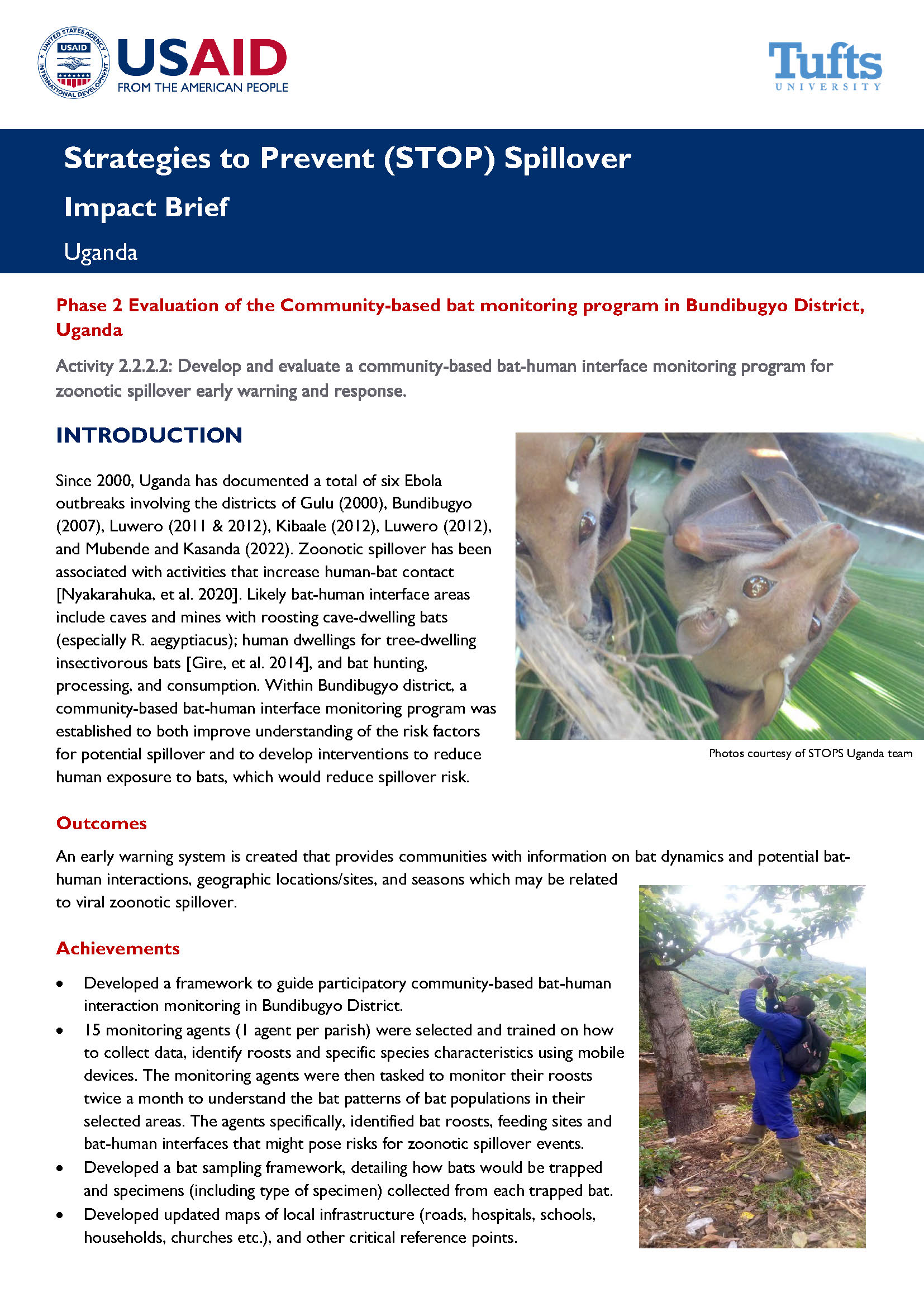
This brief describes a community-based bat-human interface monitoring program to improve understanding of the risk factors for potential spillover and to develop interventions to reduce human exposure to bats, which would reduce spillover risk.
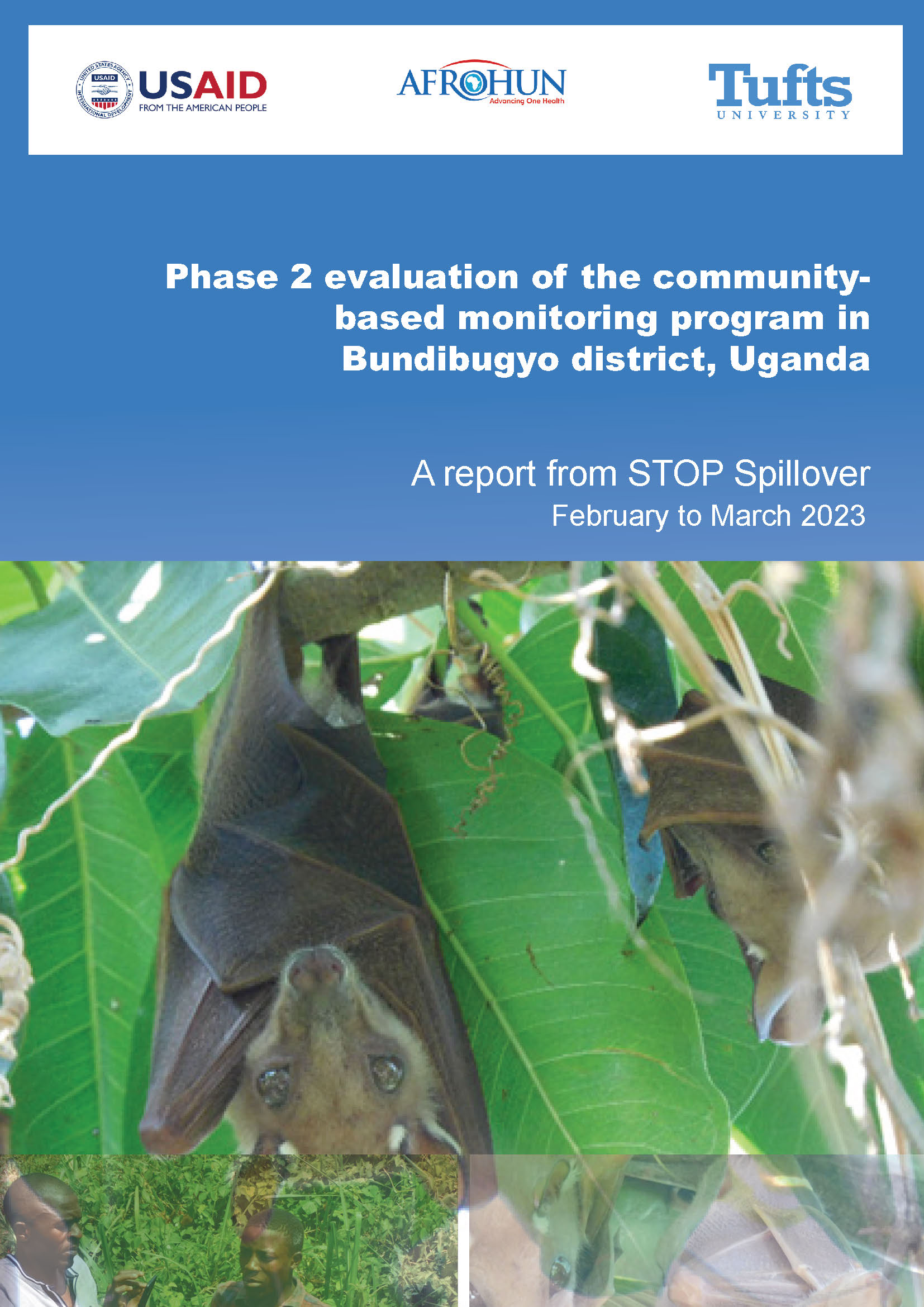
Phase 2 Evaluation of the Community-based Bat Monitoring Program in Bundibugyo District, Uganda
This report presents the community bat-monitoring approach and the results obtained from the two-month bat-human interaction monitoring period in Bundibugyo district.
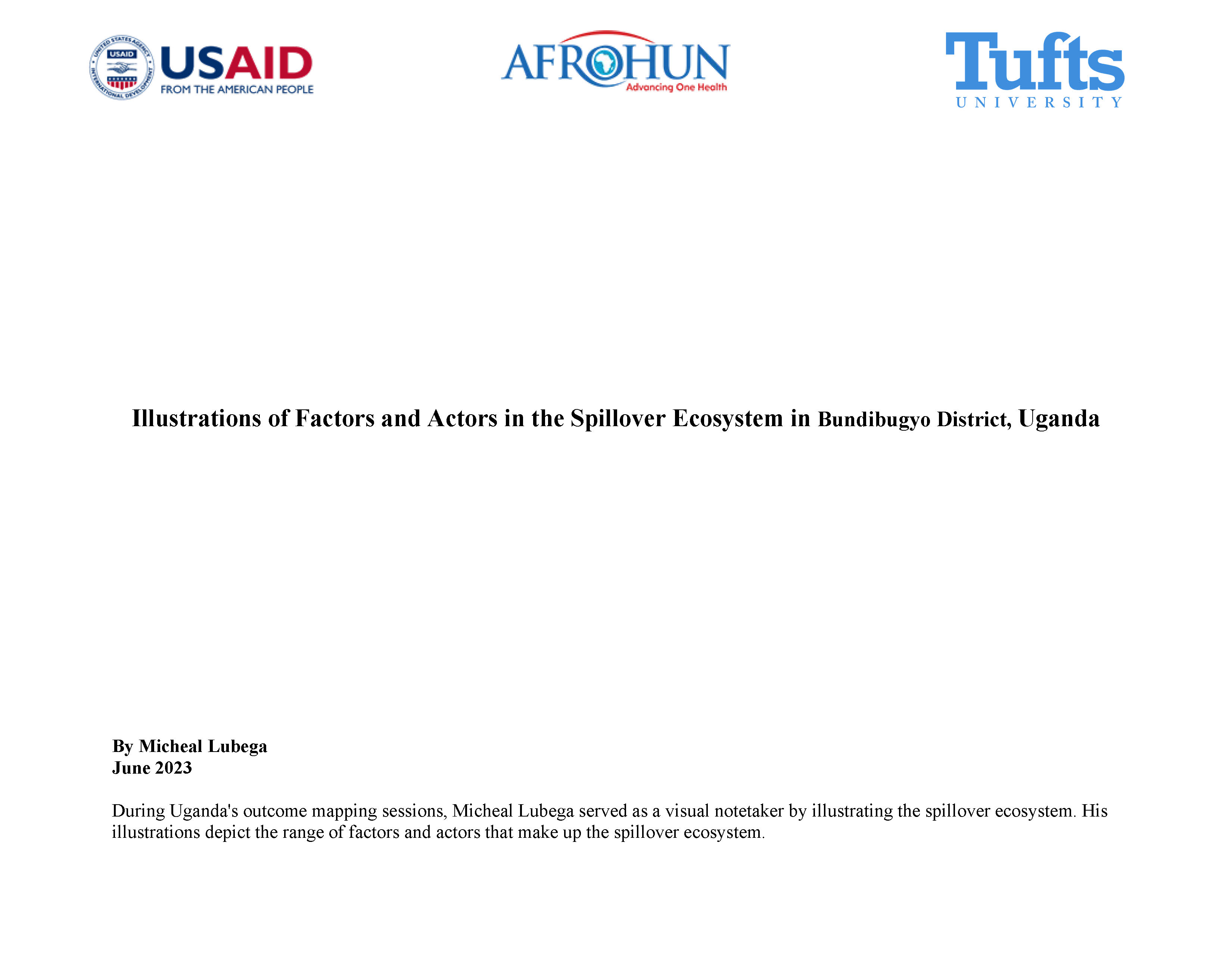
Illustrations of Factors and Actors in the Spillover Ecosystem in Bundibugyo District, Uganda
These illustrations were created during Uganda's outcome mapping sessions, when Micheal Lubega served as a visual notetaker by illustrating the spillover ecosystem. His illustrations depict the range of factors and actors that make up the spillover ecosystem.
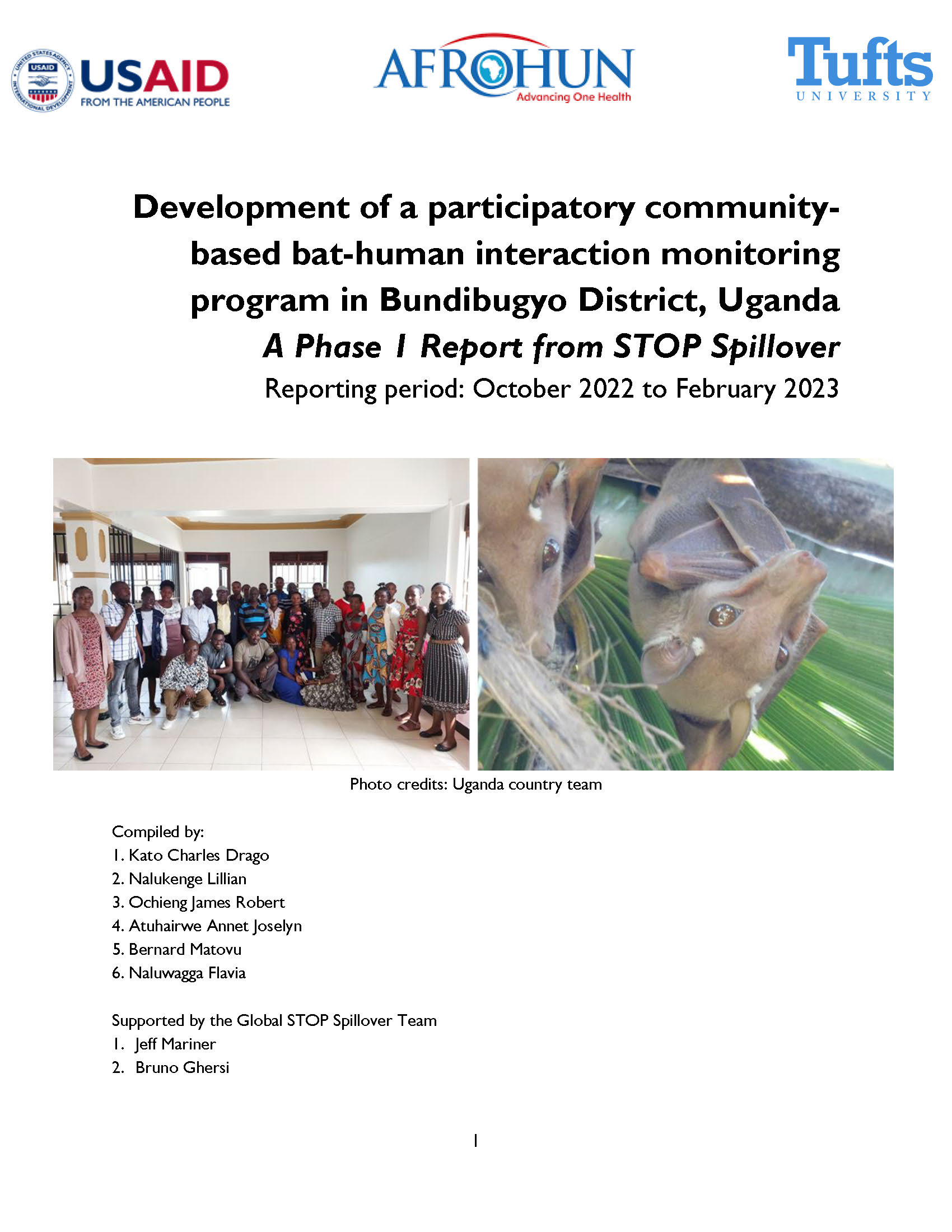
This report summarizes Phase I of the participatory community-based bat-human interaction monitoring program in Bundibugyo District, Uganda from October 2022 to February 2023.
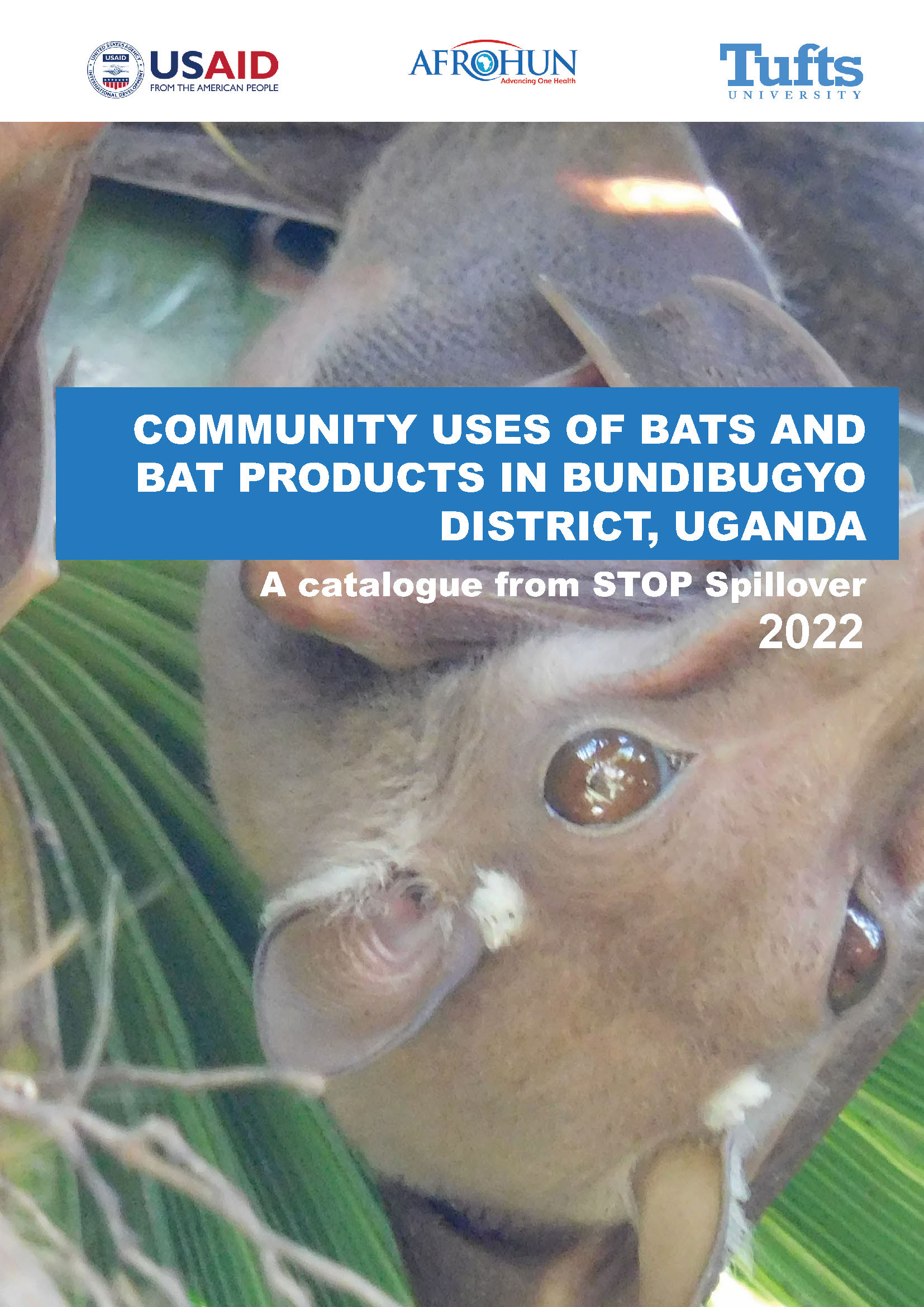
This resource documents bat-human interactions, myths, and the perceived value of bats in Bundibugyo district, including farming, bat hunting, fetching water, and the use of bats in traditional medicine, agriculture, and income generation.
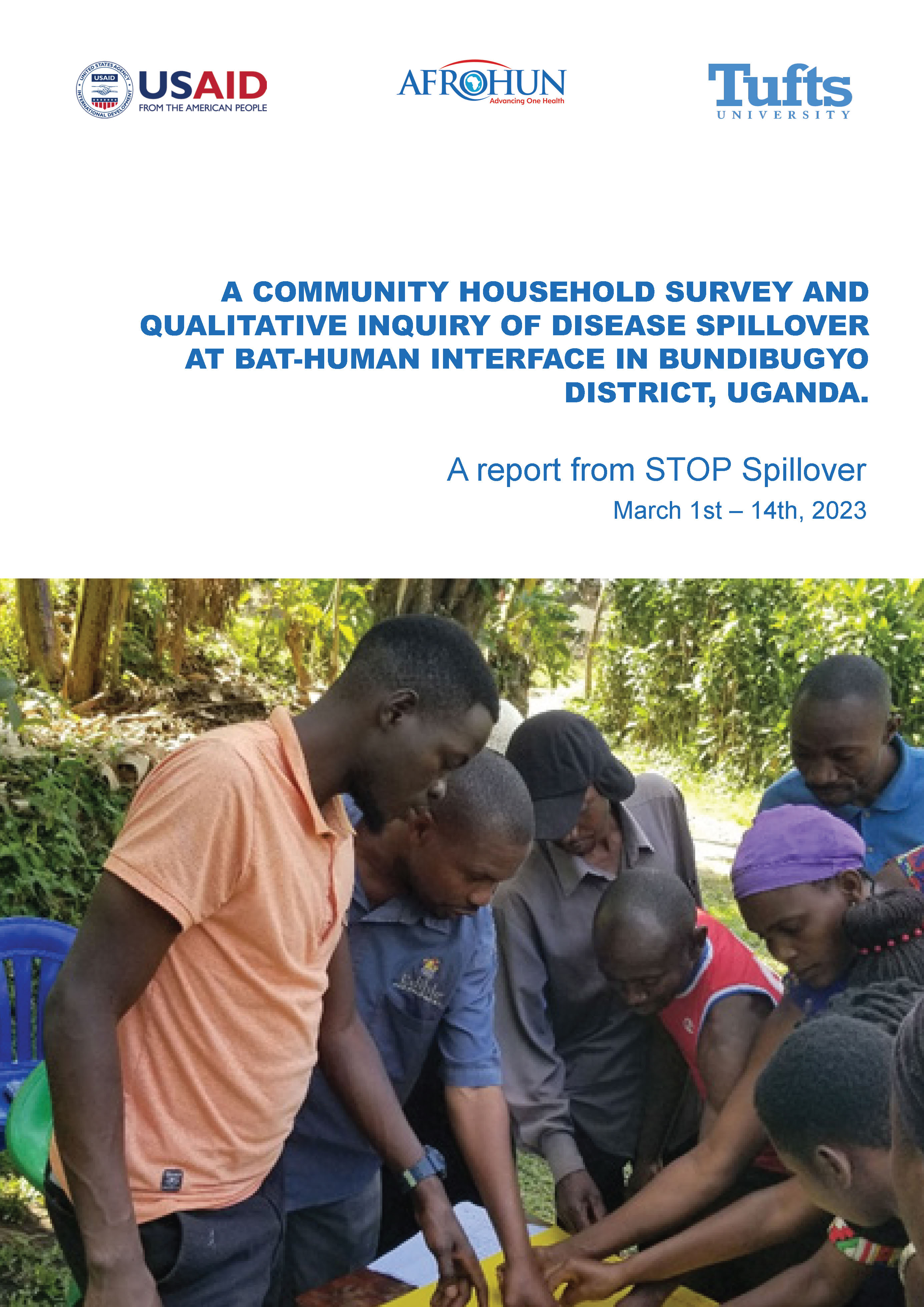
This report summarizes the results of community surveys and focus group discussions conducted in Bundibugyo district that explored the behavioral, socio-cultural, gender-specific, and economic risk factors associated with bat-human interaction in the study areas in the district.
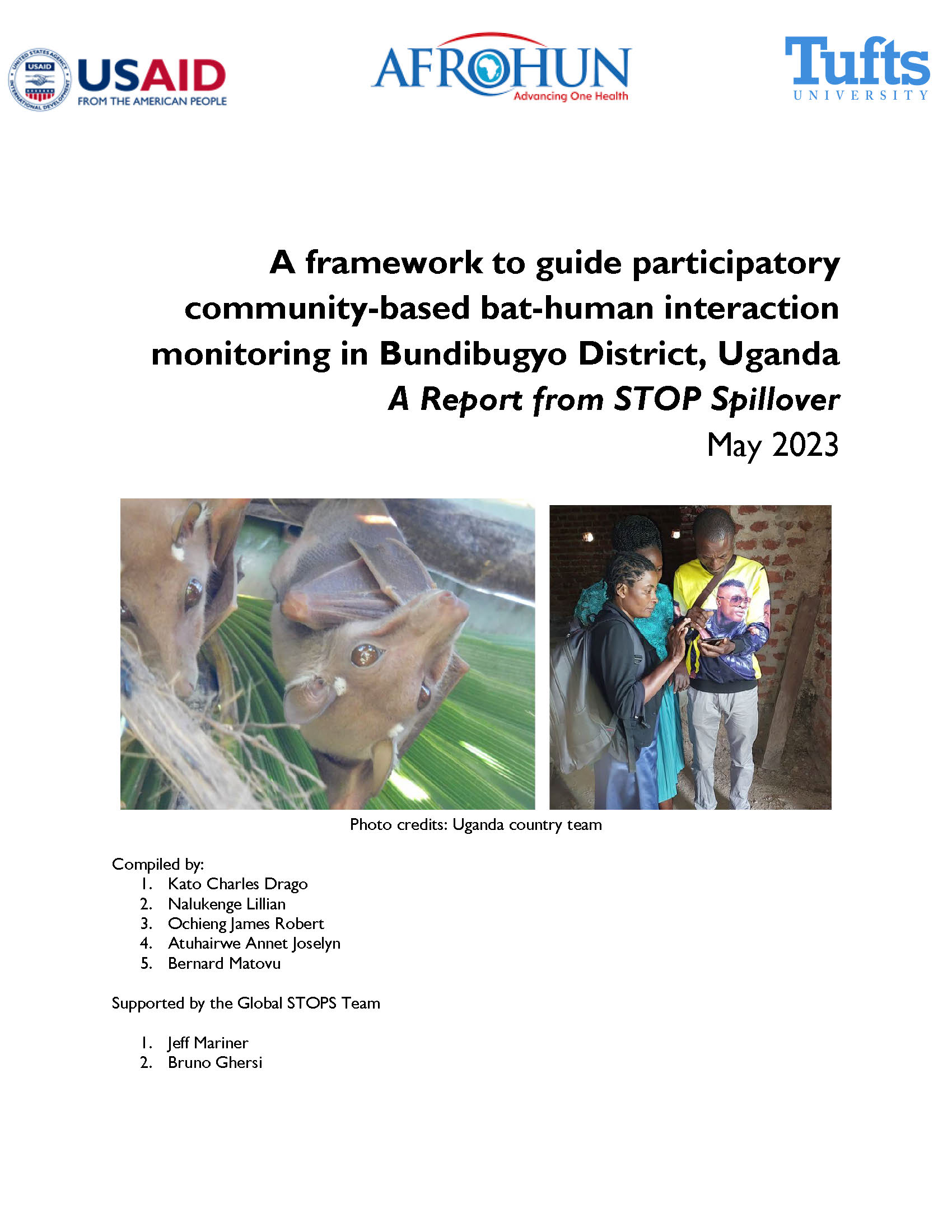
This document describes the activities of the bat-human interaction monitoring program in Bundibugyo district, the data collected and indicators monitored, and the plan for data processing, analysis, and reporting.
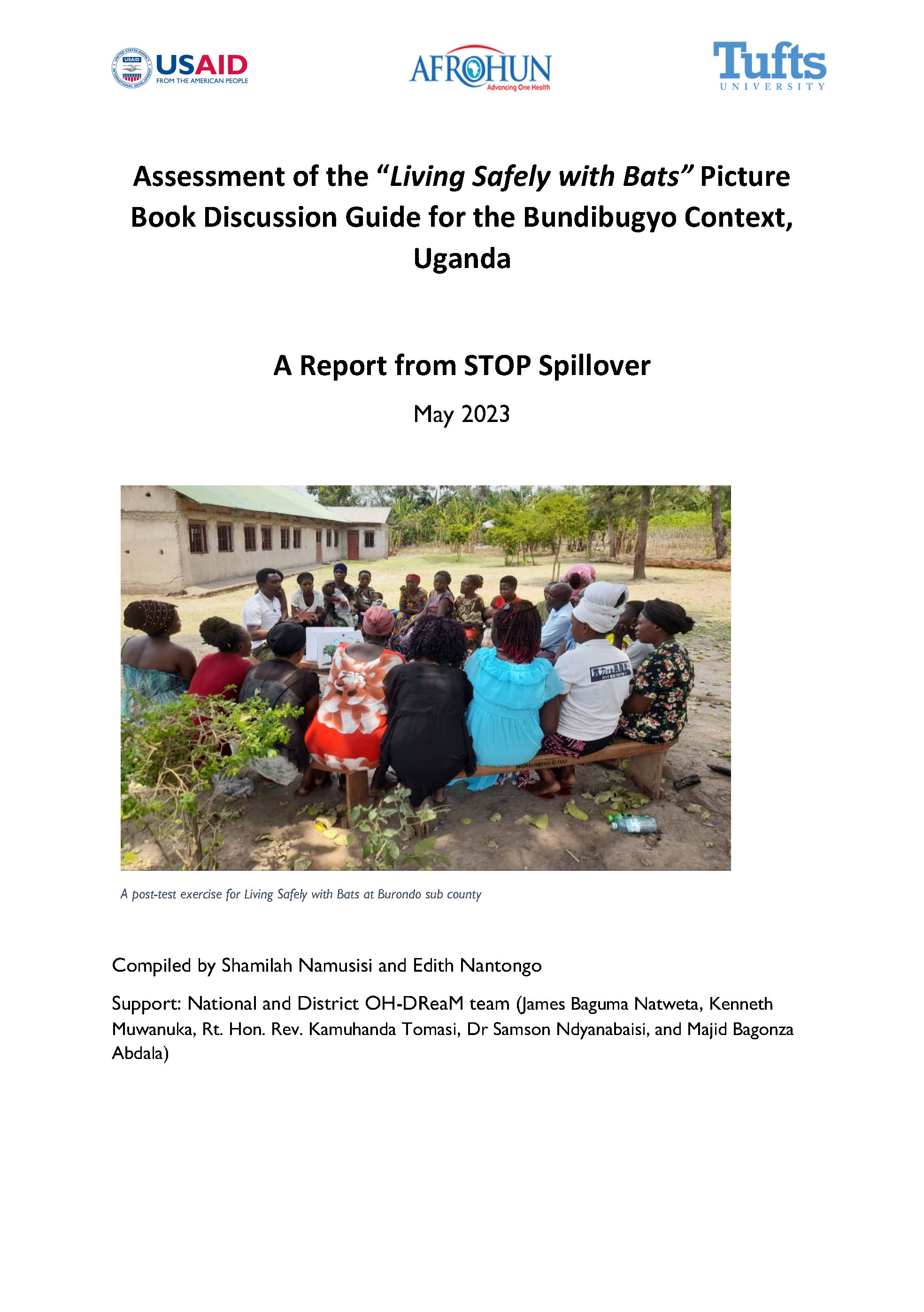
This document summarizes the results of an exercise that assessed the usability and appropriateness of the Living Safely with Bats community discussion guide for the Bundibugyo district.
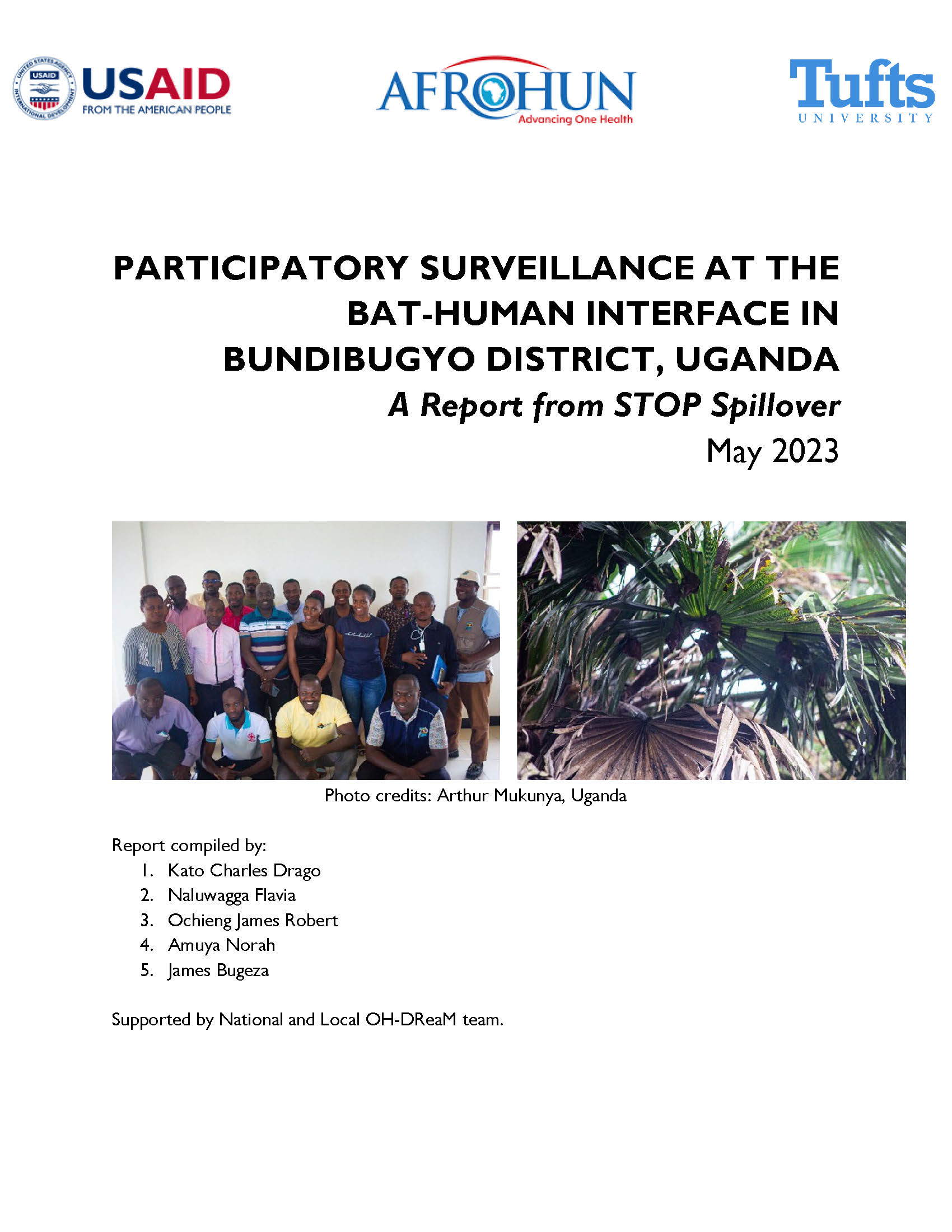
Participatory Surveillance at the Bat-Human Interface in Bundibugyo District, Uganda
This report summarizes the project’s participatory surveillance approach to investigate bat host ecology (based on community knowledge) and human behavioral risk factors associated with human-bat interaction to inform the development of the community-based bat-human interface monitoring program.
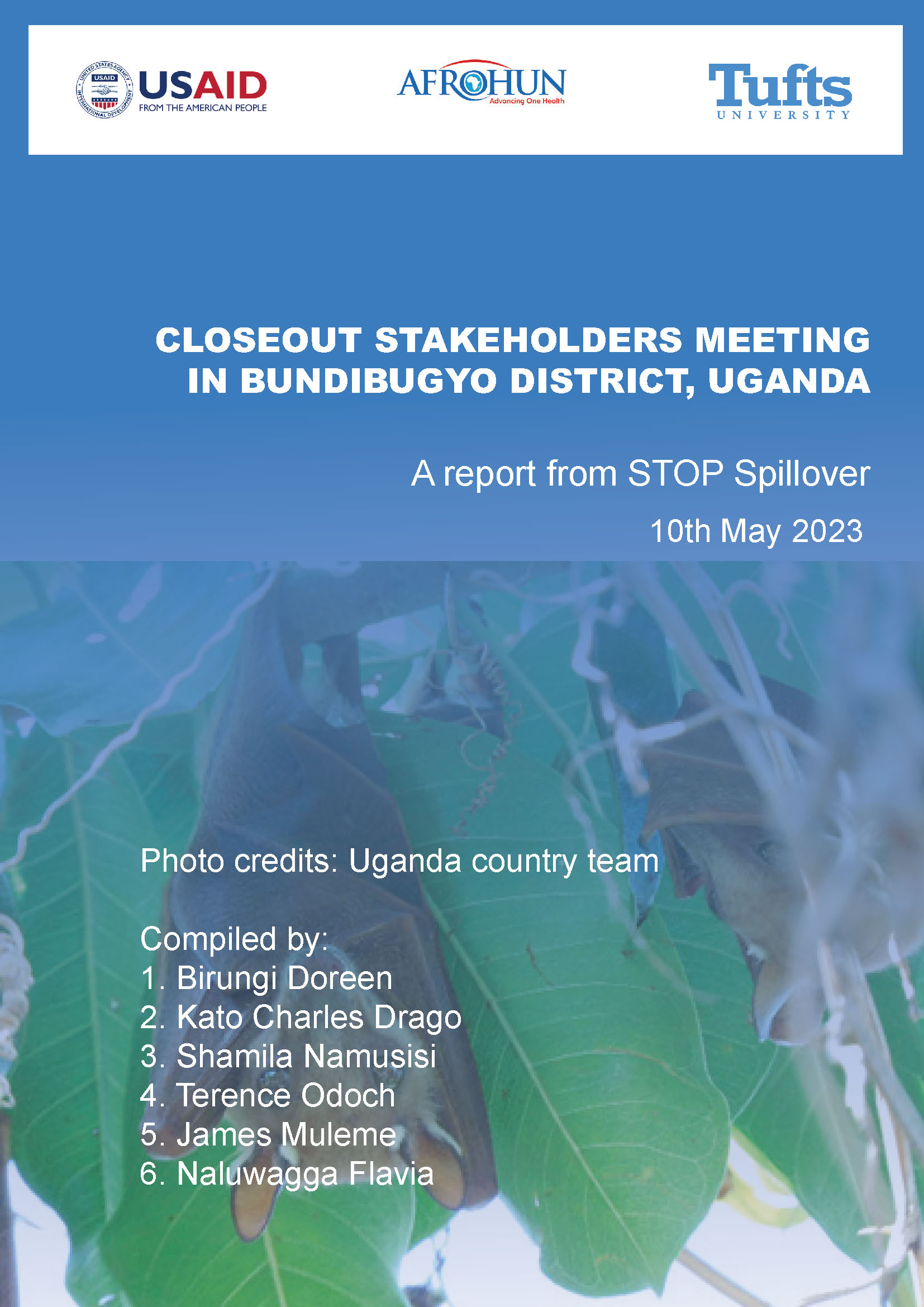
Closeout Stakeholders’ Meeting in Bundibugyo District, Uganda
This document summarizes highlights of the STOP Spillover Uganda team’s final stakeholder meeting with partners in Bundibugyo district in May 2023.
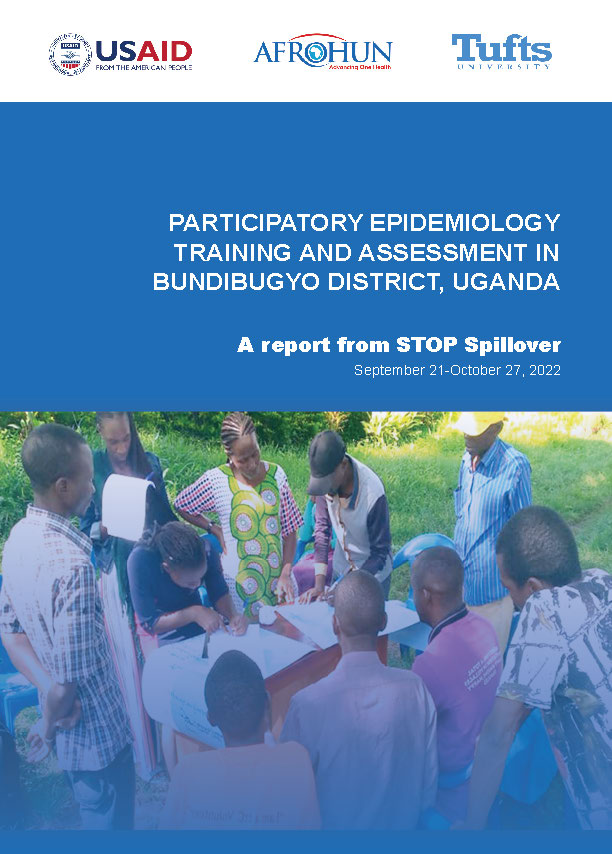
Participatory Epidemiology Training and Assessment in Bundibugyo District, Uganda
This document summarizes the results of a training to equip community members with knowledge and skills in participatory epidemiology and an assessment to better understand the social, behavioral, cultural, and traditional practices that increase human-bat interactions and the risks of spillover.
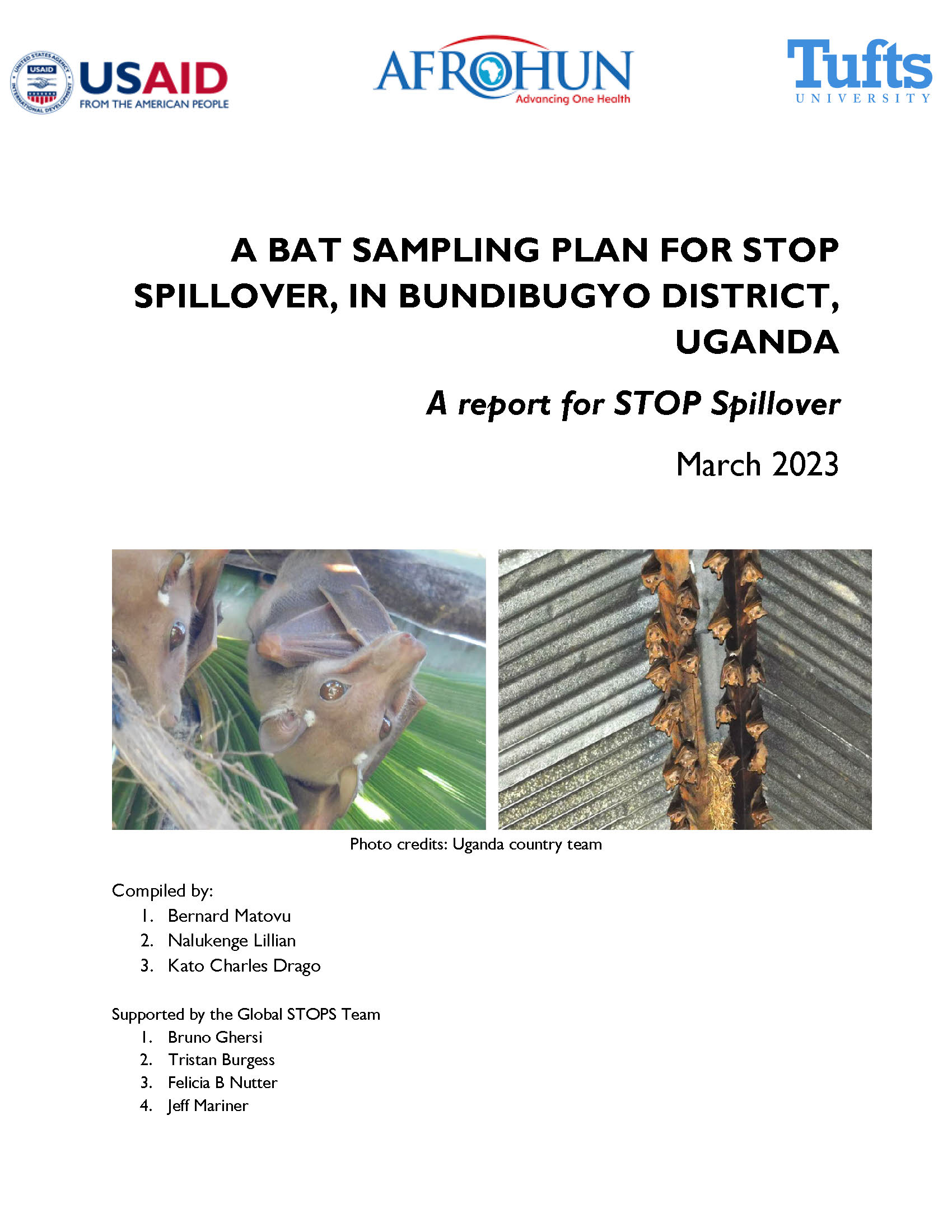
Bat Sampling Plan for STOP Spillover in Bundibugyo District, Uganda
This document describes the procedures used in Bundibugyo district to trap bats at the bat-human interface and collect specimens from trapped bats.
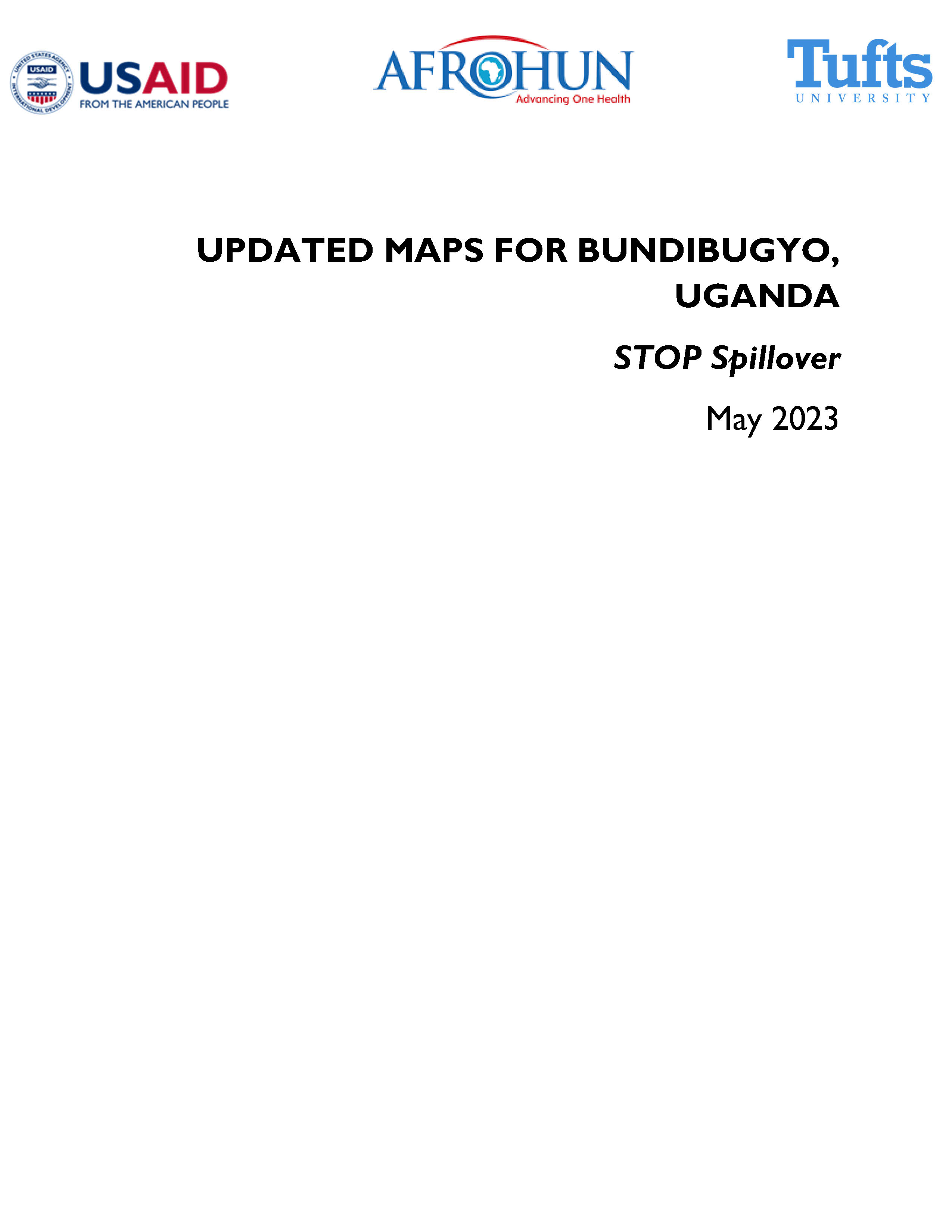
Updated Maps for Bundibugyo District, Uganda
These documents map all major human infrastructure interactions and bat nesting areas in and around bat-human interaction sites in Bundibugyo district.
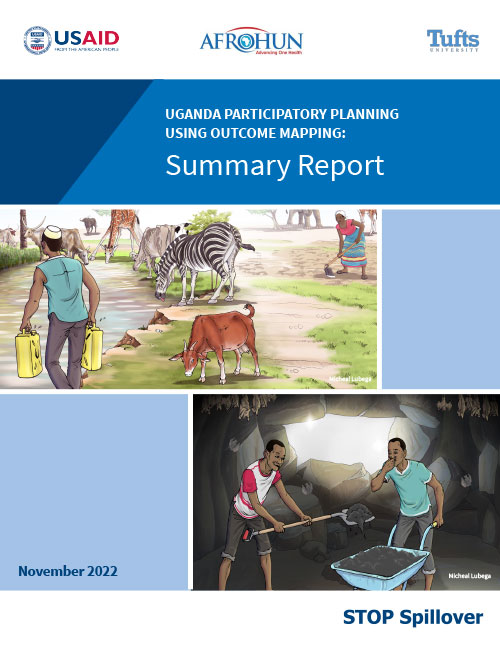
Uganda Participatory Planning Using Outcome Mapping: Summary Report
Through Outcome Mapping (OM), a structured participatory tool that uses a collaborative context-specific process, spillover ecosystem stakeholders (both traditional and non-traditional) are empowered to identify and reduce zoonotic spillover risks at human-animal-environment interfaces and develop an outcome-oriented project action plan. This report outlines the details of the OM workshop activities in Uganda.